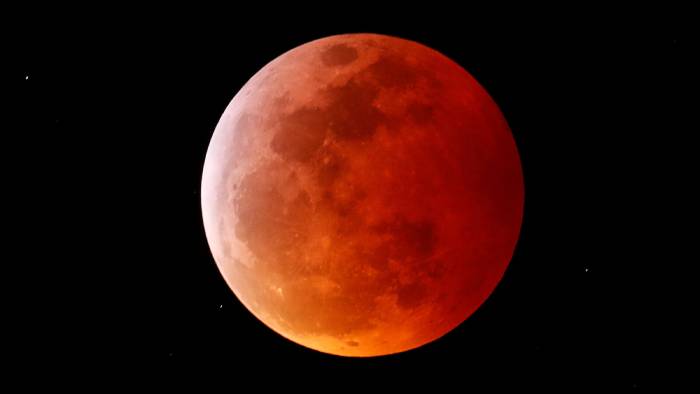A total lunar eclipse is on the horizon, following the year’s first solar eclipse, a partial eclipse on April 30.
The full Flower Moon will enter Earth’s shadow between the late evening of May 15 and the early morning of May 16, depending on your time zone, causing a total lunar eclipse visible from the majority of the Americas and Antarctica, as well as the western reaches of Europe and Africa and the eastern side of the Pacific. A penumbral eclipse will be visible from New Zealand, Eastern Europe, and the Middle East, in which only the edge of Earth’s shadow falls over the moon.
The partial eclipse will begin on May 15 at 10:28 p.m. EDT (0228 GMT on May 16) and end on May 16 at 12:11 a.m. EDT, according to TimeandDate (0411 GMT). A Blood Moon occurs when the moon takes on a reddish tint due to the total eclipse effect. It is scheduled to end at 1:55 a.m. EDT (0555 GMT). The penumbral eclipse will begin approximately an hour before the partial eclipse and end about an hour after it.
Eclipses of the moon always occur during full moons. Full moons happen when the moon is on the opposite side of the Earth from the sun, and the sun lights the moon’s complete face as seen from Earth. Because the moon’s orbit is slanted by roughly 5 degrees compared to the Earth’s, it typically avoids the Earth’s shadow; when it doesn’t, a lunar eclipse occurs.
Penumbral, partial, and total lunar eclipses are the three forms of lunar eclipses. In a penumbral eclipse, the moon passes through the diffuse outer section of the Earth’s shadow, resulting in only a modest dimming of the moon’s surface. A partial eclipse occurs when a portion of the moon passes through the Earth’s deepest shadow, the umbra, darkening some areas of the moon significantly.
A total eclipse, as the name implies, occurs when the entire moon passes through the darkest region of Earth’s shadow. As the moon moves into the umbra, a total eclipse will contain both penumbral and partial phases. Although some locations will miss parts while the sun is above the horizon, the upcoming lunar eclipse on May 15–16 will be a total lunar eclipse.
The moon appears blood crimson during total lunar eclipses. This is due to the fact that light from the sun refracts around the Earth as if it were a prism; the light waves are stretched out and appear redder on the spectrum when they reach the moon. The hue of the moon is also affected by the state of the Earth’s atmosphere; depending on the quantity of dust, cloud cover, or volcanic ash in the atmosphere, the moon can appear more orange or gold.
Don’t worry if you miss this complete lunar eclipse; there will be another one later this year on Nov. 8. This one will be seen throughout the Americas, Oceania, and Asia.
- Prediction of MicroStrategy Stock Price: What Next After Bitcoin Halving? - April 19, 2024
- Dogecoin, Ethereum, and Bitcoin: A comparison of the top cryptocurrencies - April 19, 2024
- UAE Ranks Top 3 in Global Business Among BRICS Nations in 2024 - April 19, 2024





